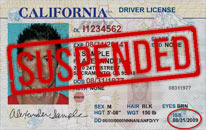
If you asked us to define a saturation patrol meaning, we might say that it is a law enforcement strategy intended to apprehend drivers who are actively committing infractions. It starts when multiple police officers or squad cars are deployed in a concentrated area.
Once they arrive, they work to identify people who may be disobeying the law by operating vehicles under the influence. Unlike DUI checkpoints—which involve stopping every vehicle at a fixed location—saturation patrols focus on mobile observation.
This method relies on officers to spot signs of illegal activity. This method is harder for drivers to avoid and does not require prior public notice. If you are pulled over and arrested as a result of a saturation patrol, a Los Angeles DUI lawyer may be able to help.
How Saturation Patrols Work
Saturation patrols are conducted by assigning extra police officers to specific areas known for high rates of driving under the influence (DUI) and other incidents or traffic violations. These operations are often funded by federal grants aimed at reducing impaired driving.
With a goal of improving public safety, here’s what the process typically involves:
- Deployment of a plan: Law enforcement identifies areas with a high likelihood of violations, such as nightlife districts, event venues, or major thoroughfares.
- Execution of patrols: A larger-than-usual number of squad cars patrol the designated area. The officers in these vehicles look for behaviors that may indicate impaired or unsafe driving practices.
- Apprehension and enforcement: Officers pull over individual vehicles that they observe engaging in violations like driving erratically, speeding, or running red lights.
As you can see, saturation patrols allow officers to apprehend violators on the spot while simultaneously enforcing a wide range of traffic laws.
What Are the Differences Between Saturation Patrols and DUI Checkpoints?
While both strategies aim to reduce impaired driving, there are distinct differences between a saturation patrol and a DUI checkpoint. Saturation patrols involve mobile units that monitor an area, while DUI checkpoints operate from fixed roadblocks.
DUI checkpoints require every vehicle to stop, whereas saturation patrols stop only vehicles observed committing traffic violations. While DUI checkpoints typically have to be announced to the public, saturation patrols do not require advance notice.
This means DUI checkpoints are often avoidable, so saturation patrols tend to be more effective at catching violators. With checkpoints, the results often revolve around arrests for DUIs, driving without a license, or drug possession, while patrols often lead to a wider range of citations.
Why Are Saturation Patrols Conducted?
The primary goal of saturation patrols is to enhance road safety by reducing DUI-related crashes and deterring reckless driving. However, there are additional motivations:
- Public safety: Targeting high-risk areas prevents accidents and injuries, which ultimately protects both drivers and pedestrians alike.
- Revenue generation: DUI-related fines contribute significant revenue to municipalities and state governments.
- Grant funding: Federal grants—such as those provided by the National Highway Traffic Safety Administration (NHTSA)—often incentivize law enforcement to increase DUI enforcement efforts.
Are Saturation Patrols Legal?
Yes, saturation patrols are legal, and they are widely used across the United States. Courts have upheld their legality as long as police officers have reasonable suspicion to stop a driver. Being pulled over during a saturation patrol is treated the same as any other traffic stop.
This also means that drivers retain the same rights amid a saturation-patrol stop. However, saturation patrols have faced criticism for disproportionately targeting certain communities, particularly those with higher minority populations.
Critics argue that this selective enforcement could raise concerns about racial profiling and fairness in policing. Let’s look more closely at what this could mean.
Criticisms of Saturation Patrols
While effective at catching violators, saturation patrols have drawn criticism because many of them focus on neighborhoods with predominantly minority or low-income populations. This often leads to allegations of racial bias.
Saturation patrols also require significant manpower and funding, so some people question if these resources could be better used elsewhere. Last but not least, with a heightened focus on enforcement, some officers issue citations for infractions that would otherwise go unnoticed.
How Effective Are Saturation Patrols?
Studies show that saturation patrols can be highly effective at reducing DUIs and other incidents related to impaired driving. For example, saturation patrols often yield a higher number of DUI arrests compared to checkpoints.
The visible presence of police not only serves as a deterrent but also encourages drivers to avoid risky behaviors. Enforcement extends beyond DUIs to include violations such as speeding, running stop signs, and distracted driving.
However, their success depends on proper planning, execution, and adherence to legal guidelines.
Contact a Los Angeles DUI Attorney if You’re Facing Charges Following a Saturation Patrol Stop
Saturation patrols are a tool implemented by law enforcement to combat impaired and unsafe driving. By deploying multiple officers to high-risk areas, these patrols can enhance public safety and simultaneously deter reckless behavior.
While saturation patrols are effective, it is important to be aware of their potential drawbacks and criticisms. If you are facing charges from a saturation patrol stop, call us as soon as possible. When we speak, you can learn more about us and how we can connect you with legal counsel.




